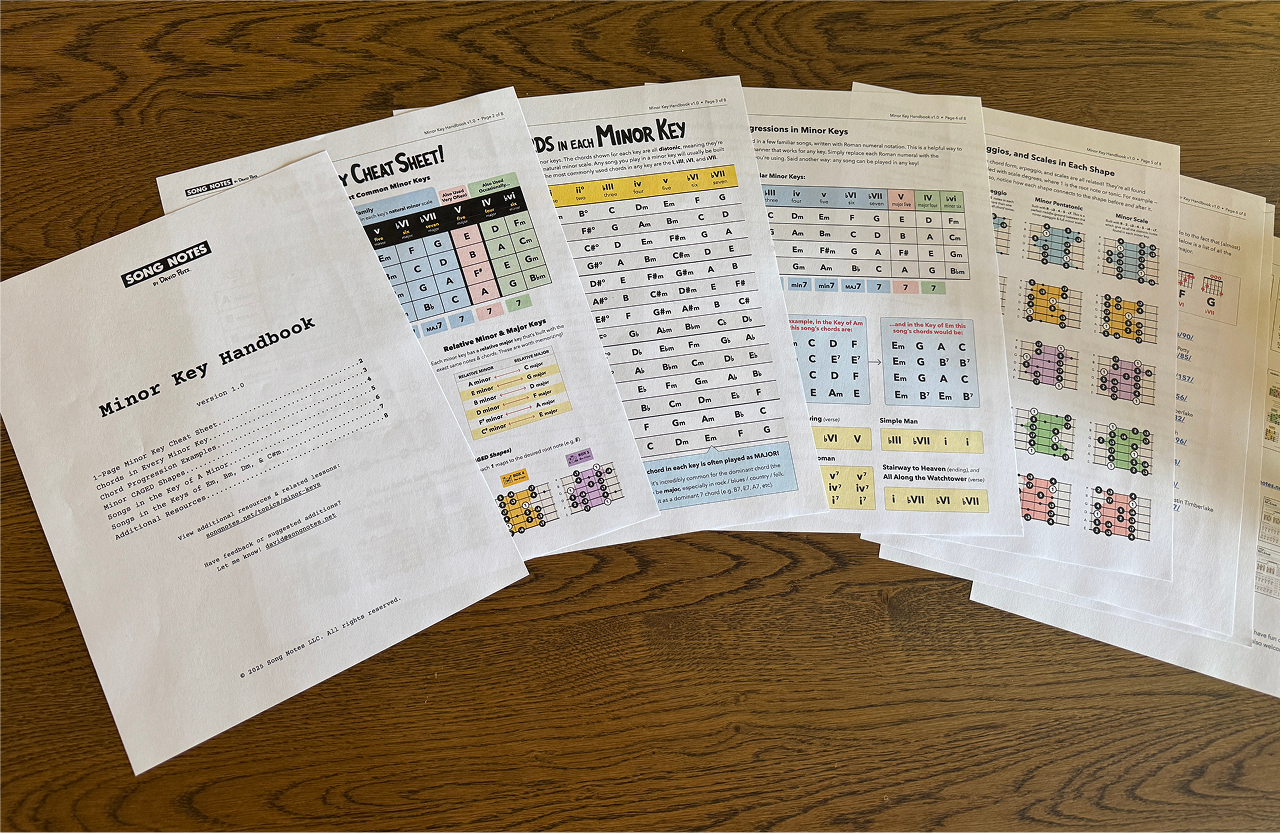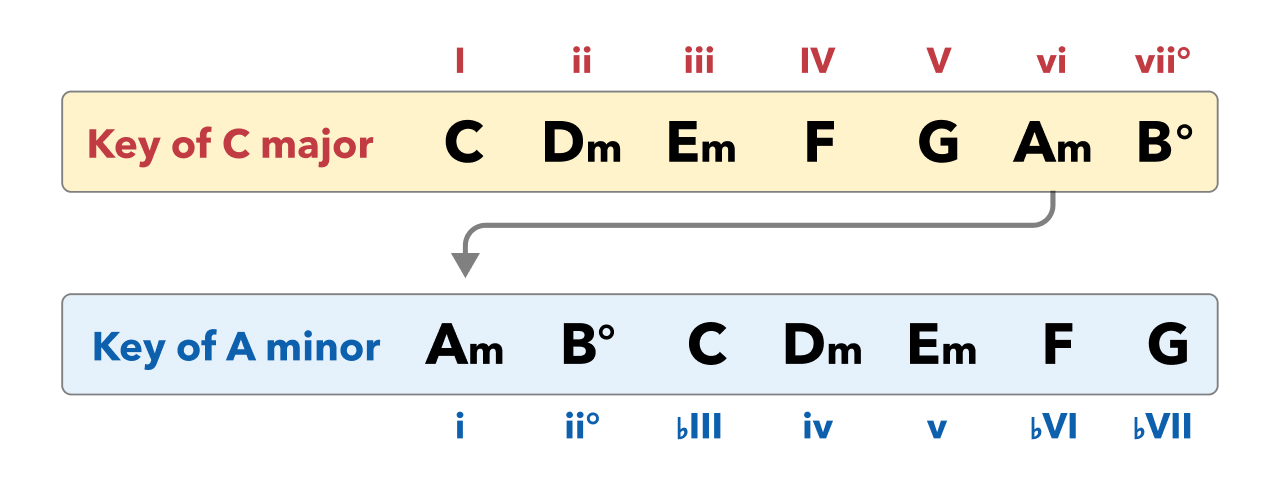
Similar to major keys, there is a predictable recipe we can follow to learn the notes & chords in every minor key. I explain all of this in my Minor Key Handbook, which includes a video overview & beautifully designed PDF download with all the information you could want.
A cool thing about major and minor keys, is they’re much more connected than you might think.
Specifically, every major key has a relative minor key that includes the exact same notes and chords. This makes it much easier for us, as we can use what we already know (about major keys) to wrap our head around their relative minor counterparts.
For example, say you’re familiar with the chords in the Key of C — the most common of which are C, F, G, and Am. You can use this same “chord family” knowledge when working in the Key of A minor, which will likewise commonly use these exact same chords. Specifically, here’s how the chords in these two keys relate:

And likewise, you can apply this to the keys of G major vs. E minor. They both have the same chords! They’re just ordered differently:

If you’re new to all this, you can file this away and return to it another day… it’s not vital to understand before continuing. Remember to check out my Minor Key Handbook for more info about minor keys, or just continue into the common major keys listed in the navigation.